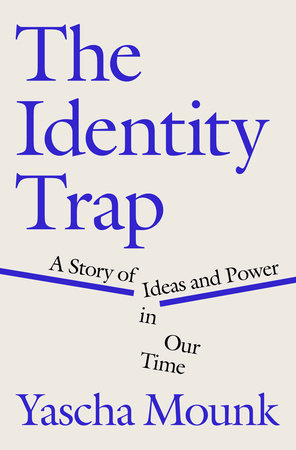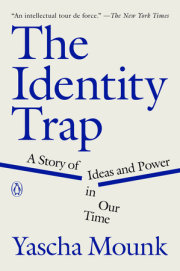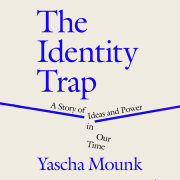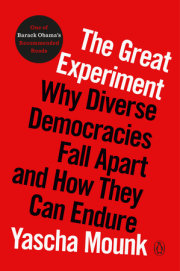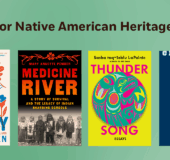In the late summer of 2020, Kila Posey asked the principal of Mary Lin Elementary School, in the wealthy suburbs of Atlanta, whether she could request a specific teacher for her seven-year-old daughter. “No worries,”the principal responded at first. “Just send me the teacher’s name.” But when Posey emailed her request, the principal kept suggesting that a different teacher would be a better fit. Eventually, Posey, who is Black, demanded to know why her daughter couldn’t have her first choice. “Well,” the principal admitted, “that’s not the Black class.”
The story sounds depressingly familiar. It evokes the long and brutal history of segregation, conjuring up visions of white parents who are horrified at the prospect of their children having classmates who are Black. But there is a perverse twist: the principal, Sharyn Briscoe, is herself Black. As Posey told the
Atlanta Black Star, she was left in “disbelief that I was having this conversation in 2020 with a person that looks just like me—a Black woman. It’s segregating classrooms. You cannot segregate classrooms. You can’t do it.”
The events at Mary Lin Elementary School, it turns out, are not the continuation of an old and familiar story; they are part of a new ideological trend. In a growing number of schools all across America, educators who believe themselves to be fighting for racial justice are separating children from each other on the basis of their skin color.
Some public schools have started segregating particular subjects. Evanston Township High School, in the suburbs of Chicago, now offers calculus classes reserved for students who “identify as Black.” Many more are embracing race-segregated“affinity groups.” A school district in Wellesley, Massachusetts, for example, recently hosted a “Healing Space for Asian and Asian American Students.” As an emailed invitation emphasized,“This is a safe space for our Asian/ Asian-American and Students of Color,*not* for students who identify only as White.”
The Fourteenth Amendment and the Supreme Court’s landmark ruling in
Brown v. Board of Education establish narrow limits on the extent to which state institutions can discriminate between citizens on the basis of their skin color. As a result, the adoption of racially segregated classrooms and safe spaces at public schools has inspired legal challenges and even a federal investigation. But what happened in Atlanta, Evanston, and Wellesley has long since become common practice in private schools, which are subject to less stringent restrictions.
At some of America’s most elite schools, from Boston to Los Angeles,teachers now routinely divide students into different groups based on their race or ethnicity. In many cases, such groups are effectively mandatory. In some, students are so young that their teachers need to tell them which group to join. At Gordon, a storied private school in Rhode Island, teachers start to divide children into affinity groups—which meet every week and are divided by race—in kindergarten. “A play-basedcurriculum that explicitly affirms racial identity,” wrote Julie Parsons, a longtime teacher at Gordon, which was recently honored for its efforts at diversity, equity, and inclusion by the National Association of Independent Schools, is especially important “for the youngest learners.”Dalton, a prestigious school on New York’s Upper East Side that educates the children of the city’s elite, has gone out of its way to explain the pedagogical goals that animate such practices. According to statements and outside resources hosted on Dalton’s website, anti racist institutions must help their students achieve the right racial identity. A conversation between experts convened by a prominent organization that has worked closely with the school and is fittingly called EmbraceRace points out that when students are young, “even a person of color or Black person might say:I don’t see myself as a racial being. I’m just human.” The task of a good education is to change that attitude: “We are racial beings.” And the first step toward that goal is to reject the “color-blindidea” that our commonalities are more important than our differences.
Of late, some schools have even started to encourage their white students to define themselves in racial terms. Bank Street School for Children,on New York’s Upper West Side, for example, is one of the most renowned early education institutions in the country. Proud to be at the vanguard of progressive pedagogy, it serves both as a K–8school and as a training college that educates hundreds of future teachers every year. Recently,Bank Street has started dividing its students into a “Kids of Color Affinity Group” and an (all-white)“Advocacy Group.” The goal of the white group, a slide from the school explains, is to “raise awareness of the prevalence of Whiteness and privilege,” encouraging students to “own”their “European ancestry.”
It is this new approach to pedagogy that inspired Sharyn Briscoe, the principal of Mary Lin Elementary School, to create a “Black class.” Briscoe grew up in the suburbs of Philadelphia, attending a predominantly white private school in which she often felt isolated. When she earned a degree in education at Spelman College, she imbibed a new set of ideas that was meant to save children from the fate she herself had suffered. As Beverly Daniel Tatum, a renowned education scholar and former president of Spelman, asks in a highly influential book, “If a young person has found a niche among a circle of White friends, is it really necessary to establish a Black peer group?” Answering in the affirmative, Tatum recommends that schools ensure that all students make friends within their own racial group “by separating the Black students” for at least some portion of every week.
Kila Posey strongly disagrees with this idea. An educator herself, she believes that “putting my daughters in a class with a whole bunch of people who look like them isn’t necessarily going to give them community.” Picking and choosing which classmates her two daughters should make friends with on the basis of their skin color, she told Briscoe in one of their first encounters, “is not your job.”
When I interviewed Posey about her multiyear battle with Atlanta’s school district, she spoke with great composure, recalling facts and figures with the precision of somebody who has become consumed by a righteous cause. Only when I asked her to describe what hopes she harbors for her daughters’ futures did her voice betray her emotions. “For my girls, the sky is the limit. They can do and be whatever they want,” she said with a suppressed tremor in her voice. After her daughters watched Kamala Harris’s inauguration as vice president of the United States, they grew determined to follow in her footsteps. But whatever they might ultimately choose to do, Posey insisted, “they’re going to be at the table. And they need to be able to get along with everybody.”
The profound disagreement between Kila Posey and Sharyn Briscoe is just one small skirmish in a much larger battle of ideas. In the place of universalism, parts of the American mainstream are quickly adopting a form of progressive separatism. Schools and universities, foundations and some corporations seem to believe that they should actively encourage people to conceive of themselves as “racial beings.” Increasingly, they are also applying the same framework to other forms of identity, encouraging people to think of their gender, their cultural origin, or their sexual orientation as their defining attribute. And of late, many institutions have taken yet another step: they have concluded that it is their duty to make how they treat people depend on the groups to which they belong—even when it comes to such existential decisions as whom to prioritize for lifesaving drugs.
Copyright © 2023 by Yascha Mounk. All rights reserved. No part of this excerpt may be reproduced or reprinted without permission in writing from the publisher.

